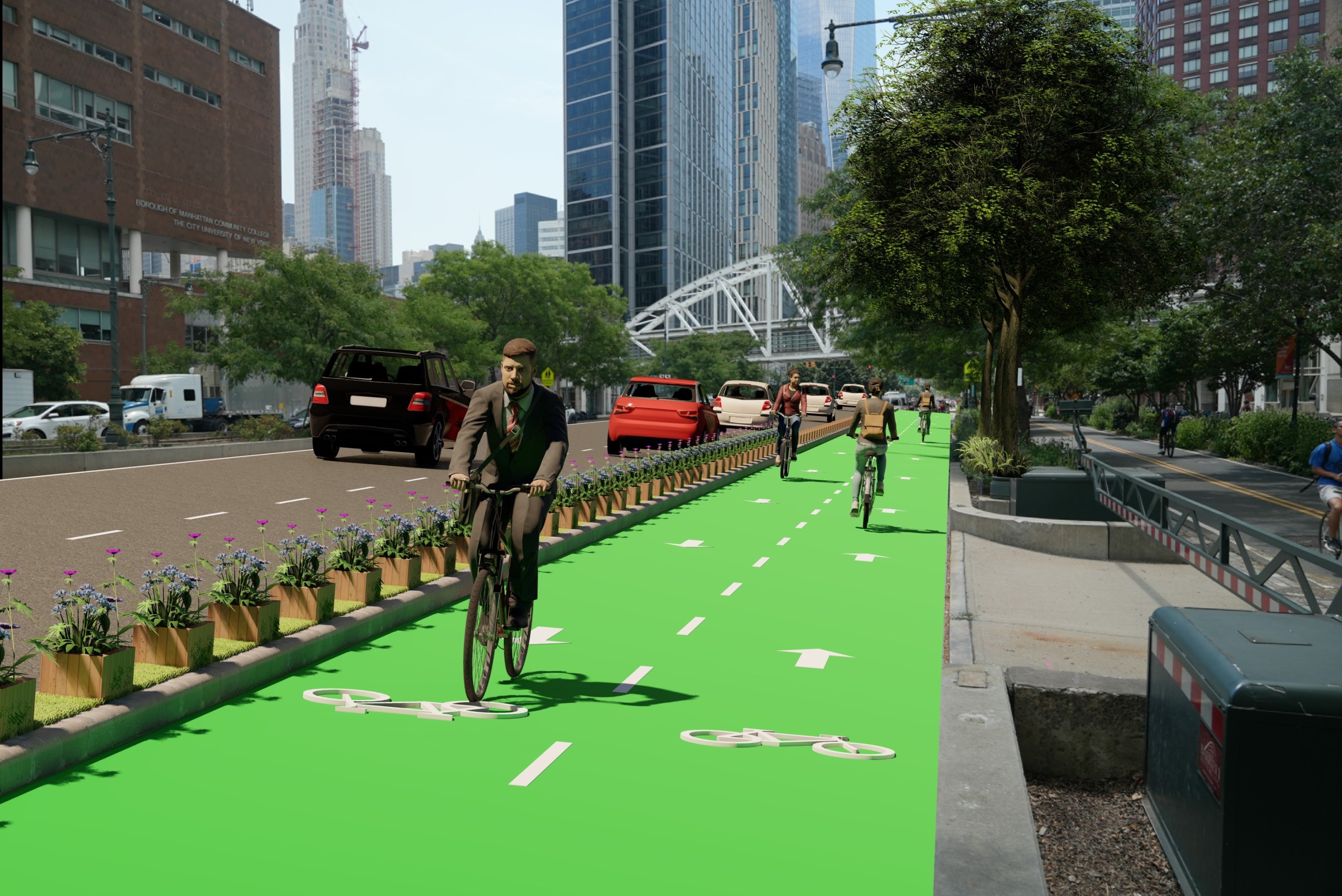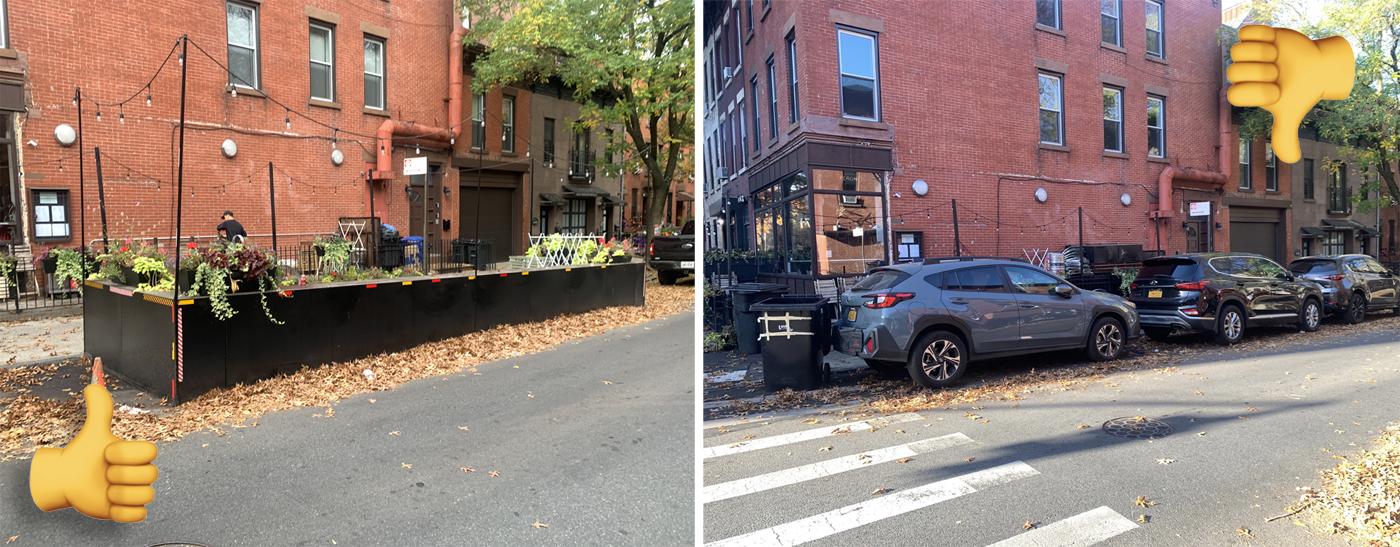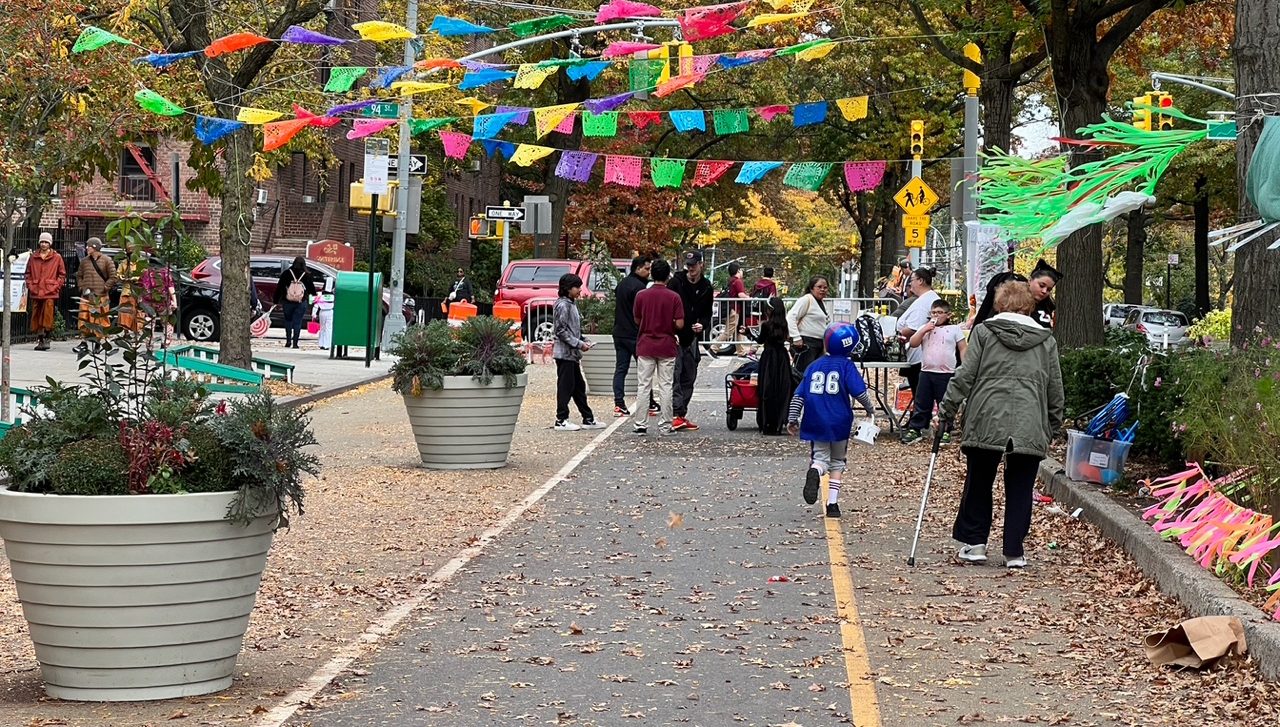This wheel grinds slowly, but it is finally rolling.
The state Department of Transportation has begun the process of studying the West Side Highway to determine "potential enhancements to better serve all users of the system, including pedestrians and cyclists," Streetsblog has learned — a move that comes years after Manhattan pols demanded it.
According to DOT spokesman Glenn Blain, the process of identify "existing needs and potential enhancements" along the "West Side Highway/State Route 9A corridor" between the Battery and 59th Street will take "approximately 18 months."
Blain promised that the agency will "engage with community stakeholders to hear their concerns and seek their input."
Local advocates for street safety and for car reduction in a booming residential and recreation corridor could not be more pleased.
"This is huge," said Jeffrey LeFrancois, executive director of the Meatpacking Business Improvement District and the former chair of Community Board 4. "We have been asking for years for an analysis of the West Side Highway as it relates to the built environment on the east side of the roadway and the increasing amount of park and greenspace on the west side. An at-grade highway on the edge of Manhattan is not the best and safest piece of infrastructure — for cars or for people — given all the amazing things that are happening."
The "amazing" things include the opening of Little Island in 2021, a new pedestrian plaza at the Whitney Museum called Gansevoort Landing, and other streetscape improvements.
LeFrancois said the best example of why the roadway needs to be reimagined came last year after the state DOT installed a new crosswalk connecting the riverfront Gansevoort Peninsula to the new landing. "We have watched the headcount soar at that intersection," he said. "We need more of that kind of thinking and we are eager to be a part of it."
News of a study is long overdue. Back in August 2022, Manhattan Borough President Mark Levine and a panoply of local pols stood alongside the car- and bike-choked artery to demand that state DOT remove one of the many car lanes to create more bike and pedestrian space — to better reflect usage patterns.
"This is exactly what we were hoping for, because of course, you start with a study," Levine told Streetsblog on Thursday. "I'm especially pleased by the way they framed it — that they want to improve the experience for cyclists and pedestrians.
"The current bike lane on the Hudson River Greenway … has become one of the most heavily used bike paths in the country, particularly with the additional increase in the use of electric bicycles on the lane. It's unsafe. And the population on the West side is increasing rapidly, both for residences and businesses."
His 2022 proposal called for repurposing a lane of the hybrid highway and boulevard, with a lush green-hued rendering showing the new lane on the southbound side. But the northbound lanes are actually wider, with space for four moving lanes and one for parking.

Levine's office said that early rendering was just an idea. At this point, he said he wants a few things from the study:
"Pedestrian crossing are very challenging right now," he said. "People tell me they don't feel comfortable crossing the West Side Highway right now because it's really wide and they don't have enough time."
Also, he said, the widespread use of electric bikes by delivery workers, and the possibility of cargo delivery vehicles "changes the transportation landscape" — but it need not be in a bad way.
"We need separated areas so we don't have e-bikes in automobile lanes and we don't have e-bikes with joggers or people taking a leisurely regular bike ride," he said.
Levine's proposal was built on earlier agitation for a better configuration for the roadway. During the pandemic year of 2020, all three downtown community boards and local lawmakers pushed for a transformation of a roadway that suddenly had virtually no car traffic, yet was booming with north- and southbound cyclists crammed into just one lane of the Hudson River Greenway, the busiest bike lane in North America.
"The idea was to take the lane during the pandemic so people could make the adjustment before things opened up again and all the cars returned," LeFrancois said at the time.
But the initiative ran into a buzzsaw named Andrew Cuomo, who blew off the effort.
"Cuomo was being Cuomo," LeFrancois said. "Meanwhile, cities around the world eclipsed us, including Boston, Paris and London made these pandemic-era changes and are better cities as a result."
Indeed, in September 2020, a state DOT agency official told local lawmakers that the agency had "concerns with removing a lane." That contempt matched what Streetsblog encountered a year earlier, when we asked then-state DOT Regional Traffic Safety and Mobility Director Adam Levine about reallocating a lane from drivers for cyclists and pedestrians, who are the majority of people who cross or bike or walk along the West Side Highway.
“To remove a lane would congest the road,” he said, citing no evidence.
The good news? Such attitudes may be changing, given that congestion pricing has projected to reduce traffic in Manhattan below 60th Street by close to 20 percent.
That said, some opponents may point out that the toll exemption for drivers who stay on the West Side Highway may increase demand in its car lanes. But LeFrancois swatted that aside.
"Those are the same individuals who say, 'There's too much traffic; add another lane.' We know that doesn't work."






